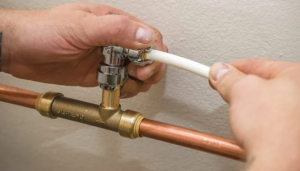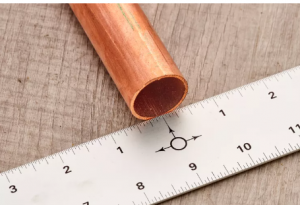Copper pipes may seem old-fashioned, but they remain a popular choice because they are strong, flexible, reliable, and corrosion-resistant. They are still used extensively in water distribution systems, underwater and gas systems, and drainage and vent systems.
There are a number of circumstances where copper pipes may need to be re-routed, re-connected, or repaired. There are several commonly used methods for joining/connecting and repairing copper pipes.
Method 1 – soldering or brazing
Both soldering and brazing are categorised as ‘heat fusion’ methods. Both of these are regarded as more traditional methods, but they are still the first choice for many professionals.

Soldering involves heating a metal alloy known as solder until it becomes a soft adhesive and can be used to ‘stick’ the pipes together. The solder hardens as it cools and creates a permanent bond.
Brazing is very similar to soldering, but it uses a different ‘filler’ material and requires higher temperatures. Brazed joints/connections are usually stronger than soldered ones.
Method 2 – Copper pipe fittings and copper pipe connectors
In recent years, there has been an increase in the use of specially designed copper pipe connectors and other specialist copper pipe fittings. These are designed to be used in situations where heat-based solutions are not safe or practical.
Copper pipe connectors are able to do a similar job to welding/brazing and are now seen as a viable alternative. Some of these are simple ‘push-to-connect’ fittings.

Method 3 – Welding
Welding as a method of joining materials has been around for thousands of years, although the more familiar method and tools were invented in the 1800s.
Welding uses extreme heat to join two parts/materials together. The join forms as the parts cool. Welding is a popular choice for joining copper pipes because it forms very strong joins, eliminates the need to use fittings, reduces the probability of leaks, and can boost flow.


